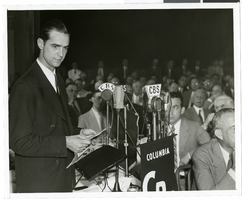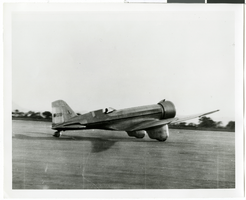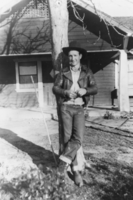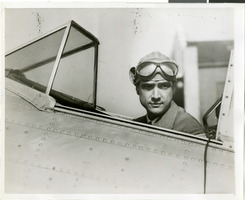Search the Special Collections and Archives Portal
Search Results
Jaycee Chatter (Boulder City): newspaper, 1944 October 15 to 1945 April 28
Level of Description
Archival Collection
Collection Name: UNLV Libraries Collection of Nevada Newspapers
Box/Folder: Box 03
Archival Component
Howard Hughes' personal life, 1941-1987
Level of Description
Scope and Contents
The series on Howard Hughes’ personal life dates from 1941-1987 and is primarily composed of reference files of newspaper clippings that document Howard Hughes’ life as an aviation leader, studio owner, philanthropist, and Las Vegas developer. His moves to Managua, Nicaragua, Vancouver, British Columbia, London, England, the Bahamas, and Acapulco, Mexico near the end of his life are also well documented as are his ex-wives, death, and the legal fight for his estate. The series also includes transcripts of radio and television interviews, magazine articles, and books about Hughes. There are also a number of biographies on Hughes, press releases, and correspondence between between Carl Byoir & Associates staff and individuals or organizations.
Archival Collection
Collection Name: Howard Hughes Public Relations Reference Files
Box/Folder: N/A
Archival Component
Bob McCaffery Collection on the Save the Hughes Flying Boat Campaign
Identifier
Abstract
The Bob McCaffery Collection on the Save the Hughes Flying Boat Campaign (1980-1983) documents efforts by activists to preserve the plane from destruction and its subsequent acquisition by the Aero Club of Southern California in 1980. The collection contains photographs and newspaper clippings about the Hughes H-4 Hercules flying boat nicknamed the "Spruce Goose" from the 1980s.
Archival Collection
Unknown author. Atlantic City wins its bet on Casinos, Business Week, 1976 November 15
Level of Description
Archival Collection
Collection Name: UNLV Libraries Collection of Articles on Gaming and Las Vegas, Nevada Topics
Box/Folder: Box 14
Archival Component

Photograph of Howard Hughes in Washington, D. C., July 21, 1938
Date
Archival Collection
Description
Image

Photograph of Howard Hughes in the Northrop Gamma Racer, 1936
Date
Archival Collection
Description
Image

Leon Hughes, son of Pahrump Ranch owner John R. Hughes, in front of the "old motel" located on the Pahrump Ranch, Nevada: photographic print
Date
Archival Collection
Description
From the Nye County, Nevada Photograph Collection (PH-00221) -- Series IV. Pahrump, Nevada -- Subseries IV.A. Hughes Family. Hughes believes the motel was constructed around 1920 by the Pahrump Valley Company, under the ownership of Isodore Dockweiler, to house Dockweiler and his associates when they visited the ranch. It featured a screened porch, one bathroom, running water, a flush toilet, a kitchen, and four bedrooms. The "motel" burned down in the early 1940s.
Image

Photograph of Howard Hughes inside an unidentified plane, circa 1937
Date
Archival Collection
Description
Image
View of warehouse and machine shop area. Boulder City in background: photographic print, 1932 February 15
Level of Description
Archival Collection
Collection Name: Six Companies, Inc. Hoover Dam Photograph Collection
Box/Folder: Oversized Box 03
Archival Component
Hughes, Clair, Highway, Mesquite, 1955
Level of Description
Archival Collection
Collection Name: Elmo C. Bruner Architectural and Real Estate Appraisal Records
Box/Folder: Box 15
Archival Component
